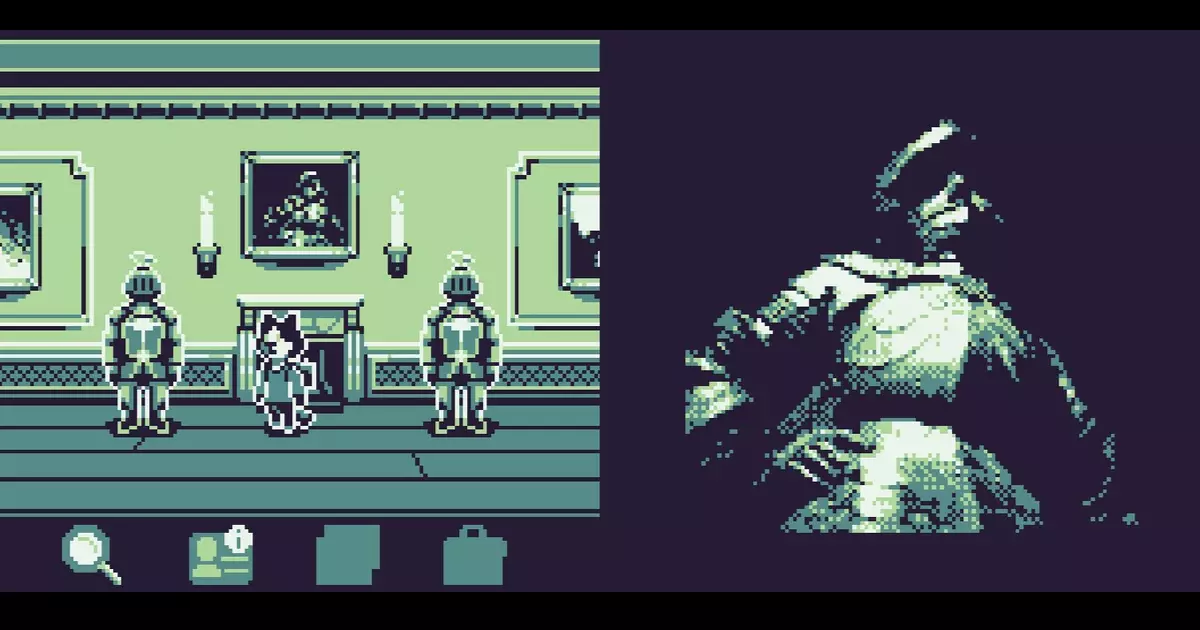Growing up, I missed out on the experience of owning a Game Boy Camera. It was not just due to financial constraints but also because of the teasing I endured from my peers regarding my Game Boy. The memories of being ridiculed for my choice of entertainment still linger, especially the instances where my friends would interrupt my gameplay of The Legend of Zelda: Link’s Awakening by abruptly turning off the device. It took me 15 long years to finally complete the game, as I had to wait until I moved away from that toxic environment. Reflecting on those times, I realize that my lack of a Game Boy Camera deprived me of a unique form of creativity and self-expression that is being appreciated by a new generation of indie PC developers today.
One such developer who has embraced the charm of the Game Boy Camera is artist and educator Catharine Graffam. Her project, GB Camera Gallery: Mystery Show, presents a virtual exhibition of Game Boy Camera photos within a spooky mansion setting. As players explore the gallery, they are drawn into a whimsical narrative involving ghosts and quirky raccoons, adding an element of mystery and intrigue to the experience. The photos featured in the gallery are contributed by Graffam’s circle of friends, showcasing the quirky and nostalgic aesthetics of the Game Boy Camera.
Released by Nintendo in 1998, the Game Boy Camera was groundbreaking in its time, offering Game Boy users the ability to capture images directly on their handheld devices. As the world’s smallest digital camera at the time, it featured a rotating ball head that enabled users to take photos from various angles, making it one of the earliest forms of selfie cameras. While the photos were initially limited to sharing with other Game Boy users via link cable or printing with the Game Boy printer, modern advancements now allow for transferring these images to computers using cartridge flashers or other third-party hardware.
Despite its technical limitations, such as the low resolution of 128×112 pixels and a 2-bit color palette, the Game Boy Camera offered a range of creative features to users. From creating pseudo double exposures with the ‘fusion’ effect to experimenting with a paint tool, time-lapse, panorama function, and even animation creation, the cartridge provided a platform for artistic exploration and expression. Additionally, the unexpected inclusion of a music creation program further showcased the versatility and ingenuity of the Game Boy Camera as a multimedia tool.
For those who wish to revisit the magic of the Game Boy Camera, Graffam offers the option to download GB Camera Gallery: Mystery Show at a price of their choosing. Furthermore, for individuals who still possess their Game Boy consoles, the game is also available for purchase on a physical cartridge that glows in the dark, providing a tangible and nostalgic connection to the era of handheld gaming. Despite my personal reservations about reliving past traumas associated with my Game Boy, I cannot deny the allure and enduring appeal of the Game Boy Camera as a cultural relic that continues to captivate new audiences.
The resurgence of interest in the Game Boy Camera among indie PC developers like Catharine Graffam highlights the timeless charm and creative potential of this iconic accessory. While my own history with the Game Boy may be tinged with unpleasant memories, I cannot ignore the impact that this device has had on popular culture and artistic expression. As we continue to embrace retro technologies and reimagine them in contemporary contexts, the Game Boy Camera stands as a testament to the enduring power of nostalgia and innovation in the world of gaming and digital art.


Leave a Reply